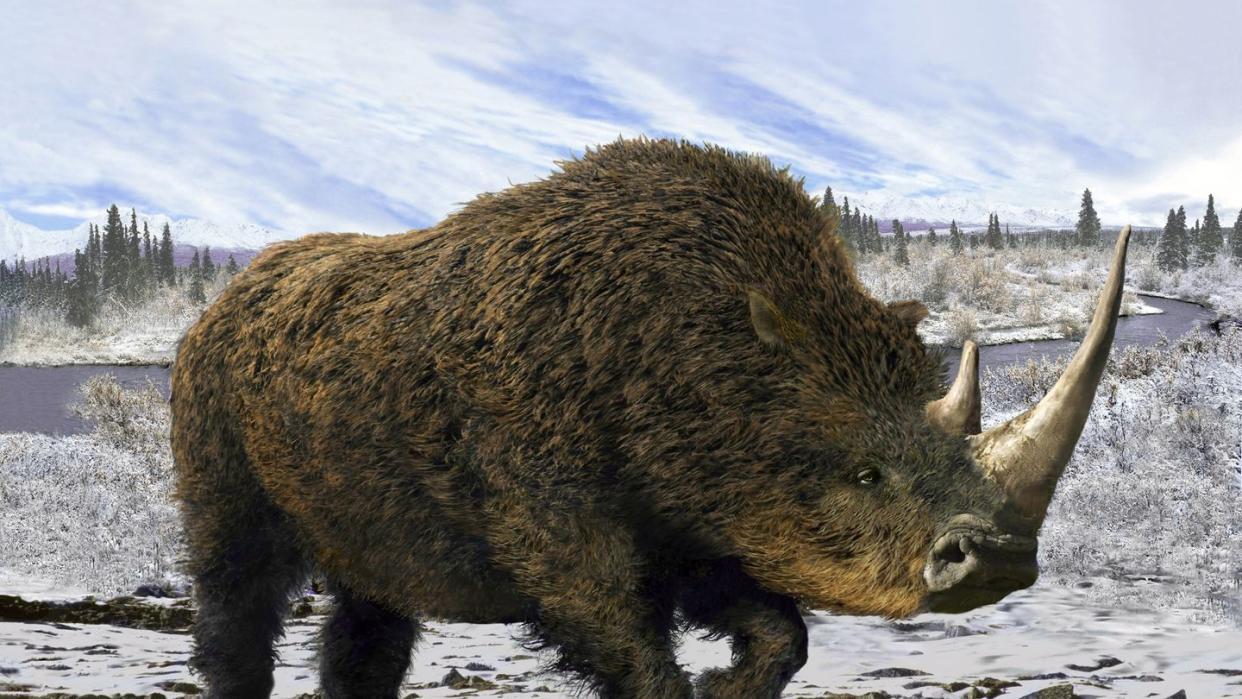Scientists Extracted Woolly Rhino DNA From Hyena Poop. That's Remarkable.

Scientists reconstructed the mitochondrial genome of a European Woolly Rhinoceros for the first time.
Extracting DNA from fossilized hyena feces was critical to the process.
Using the DNA, the team was then able to trace the lineage of the rhinos.
The fascinating part of reconstructing a European woolly rhinoceros’s mitochondrial genome for the first time in history should be the fact that scientists have now... well... reconstructed a European woolly rhinoceros’s mitochondrial genome. But in this particular story, where that DNA came from may actually be even more interesting: scientists managed to harvest it from fossilized hyena poop.
The research team behind this project—the results of which were published in the journal Biology Letters—says that the demise of the Coelodonta antiquitatis, an “iconic species of the Eurasian Pleistocene megafauna,” started around 10,000 years ago. Despite early recovery of several specimens from archaeological sites, no genomes of the population have been available. All genomic data originated exclusively from Siberian populations.
So, the research team turned to two caves in Germany, where they located fossilized feces of hyenas—a leading predator of the rhino. “Using coprolites [fossilized feces] of cave hyenas recovered from Middle Paleolithic layers of two caves in Germany,” the authors wrote, “we isolated and enriched predator and prey DNA to assemble the first European woolly rhinoceros mitogenomes in addition to cave hyena mitogenomes.”
The team says that the sequences unfortunately suggest “considerable DNA degradation,” which could limit final conclusions, but they were able to show how the mitogenomes of the European woolly rhino are genetically distinct from the Siberian woolly rhino. The data suggests that there was a “split of the populations potentially coinciding with the earliest fossil records of woolly rhinoceros in Europe,” which could date to around 450,000 years ago.
Extracting information on the woolly rhino from ancient poop may not be over. “There are several mitogenomes of European (and Asian) cave hyenas available, so our results are an addition to these that might help elucidate population dynamics,” Peter Seeber, a study author from the University of Konstanz in Germany, told IFL Science.
The European woolly rhino—which weighed roughly two tons, stood about five feet tall, and was around 11 feet in length—displays thousands of years of deviation from the Siberian population. “Insights into the population dynamics of (sub)species that have gone extinct probably because of a changing climate,” Seeber told IFL Science, “may help predict future developments and the fate of extant wildlife populations.”
Adding to the intrigue, Seeber tells IFL Science that the occurrence of variability in the woolly rhino’s mitochondrial lineages indicates that the population dynamics over its vast range could have been quite complex. “We need, of course, a lot more data from various locations throughout Europe for solid conclusions on population dynamics and ecology of this species,” ” he said.
That’s where more fossilized poop may come in.
You Might Also Like

